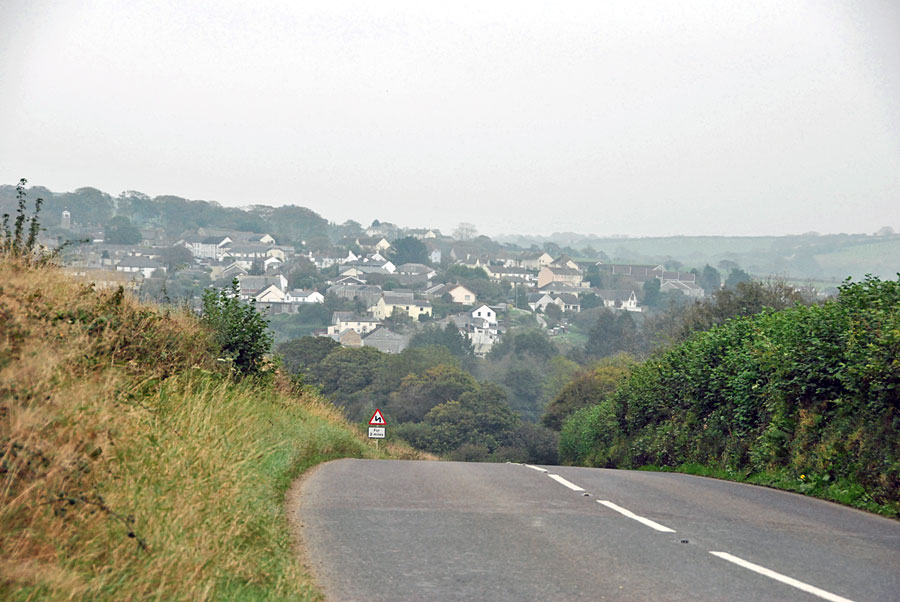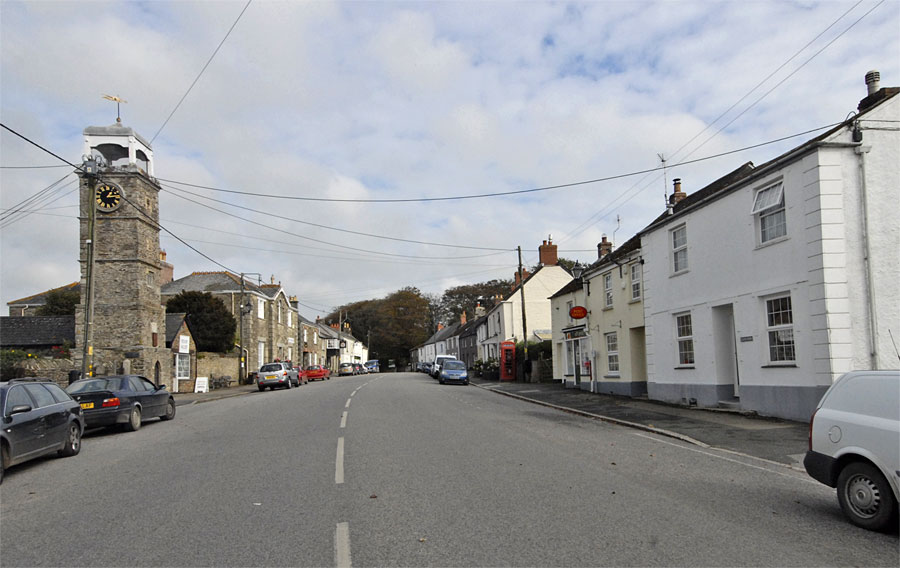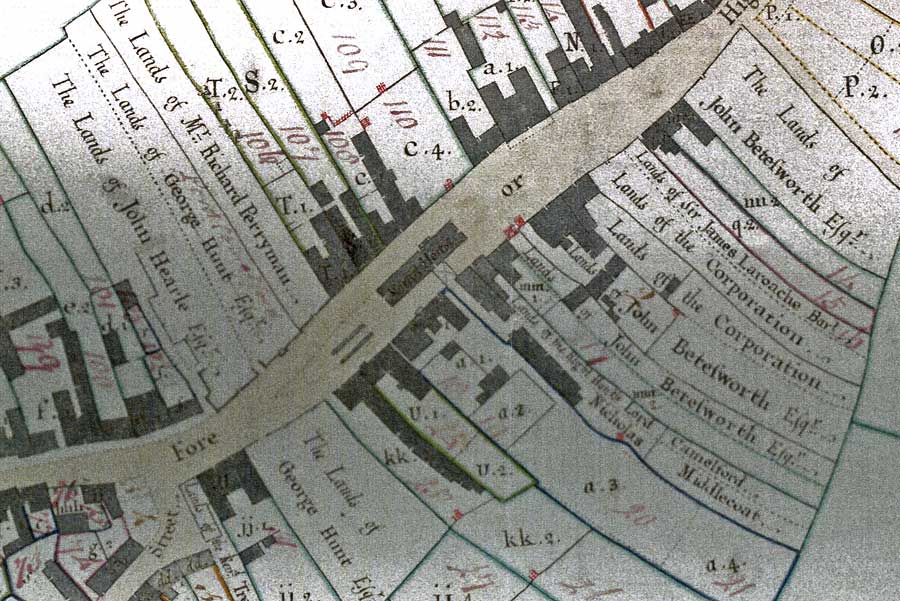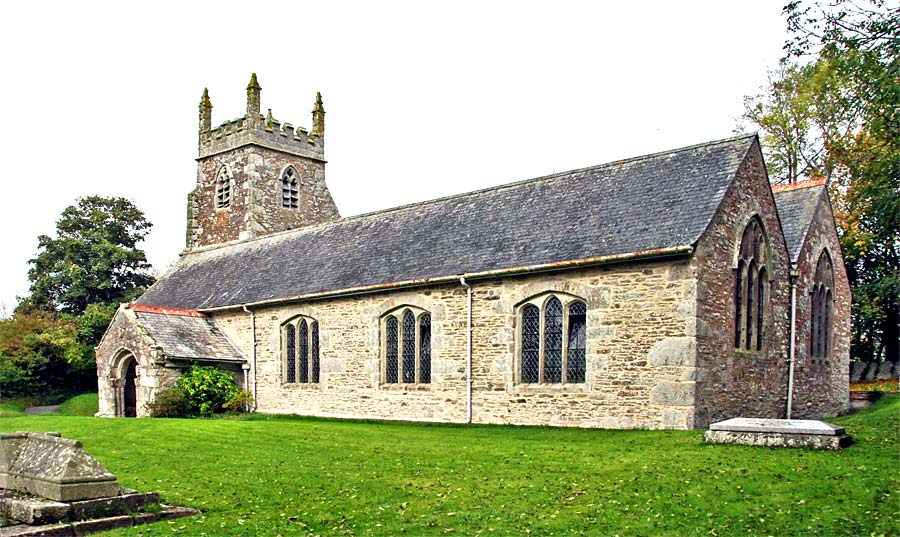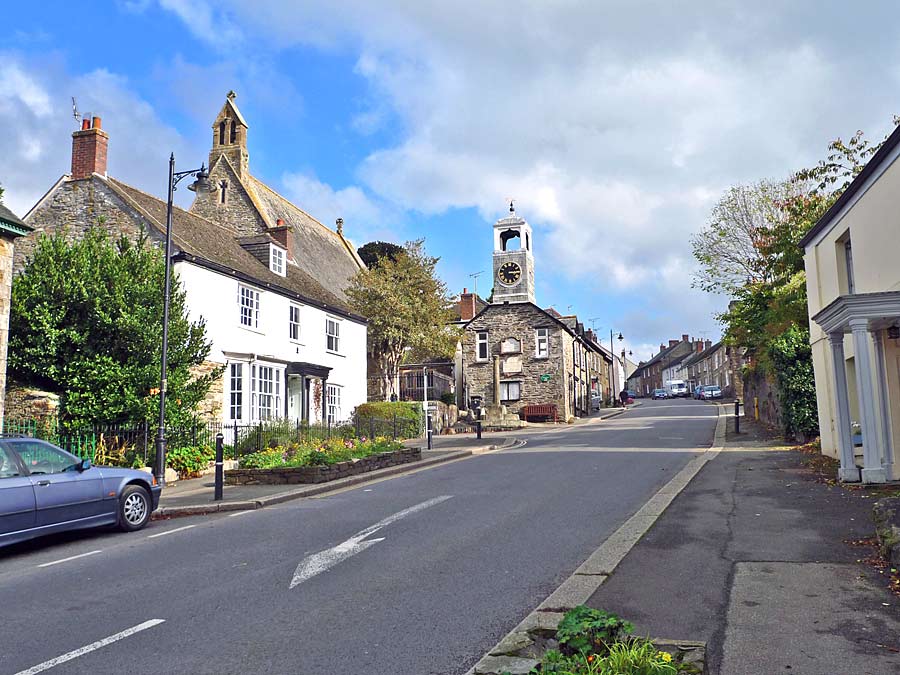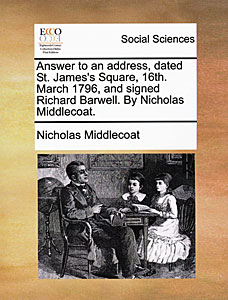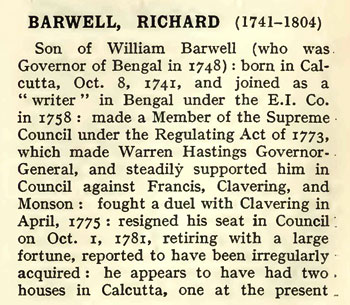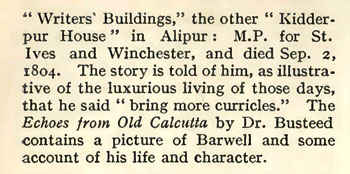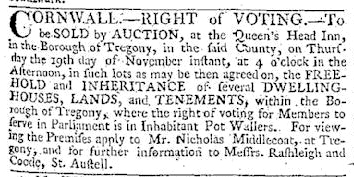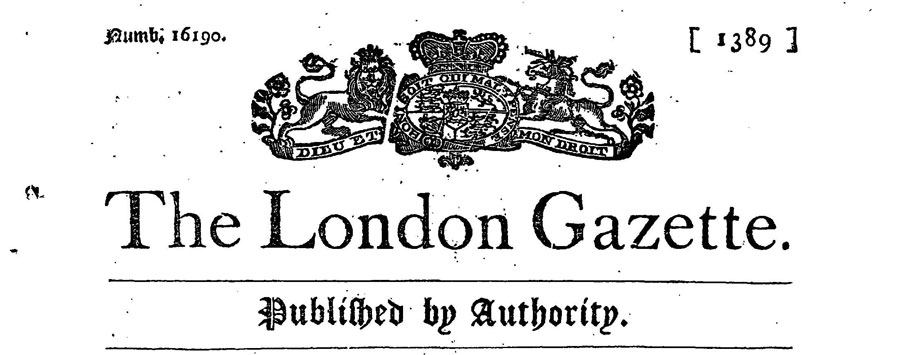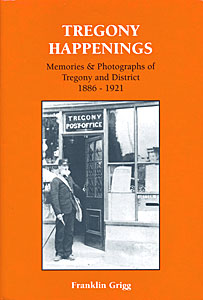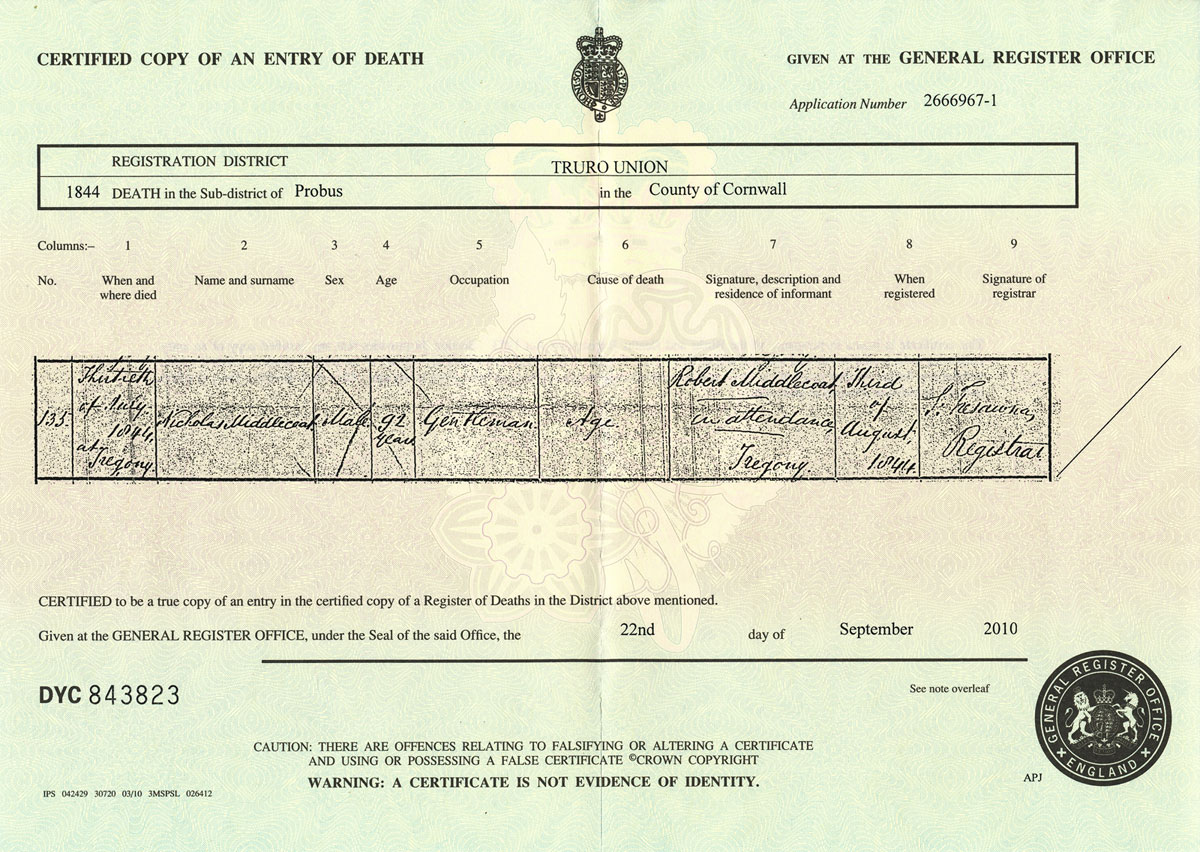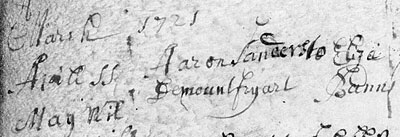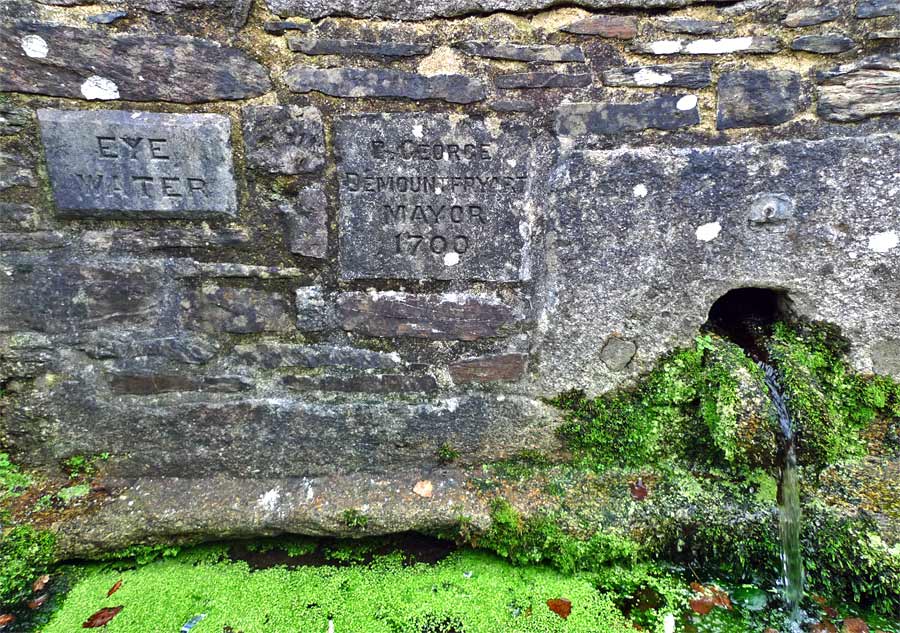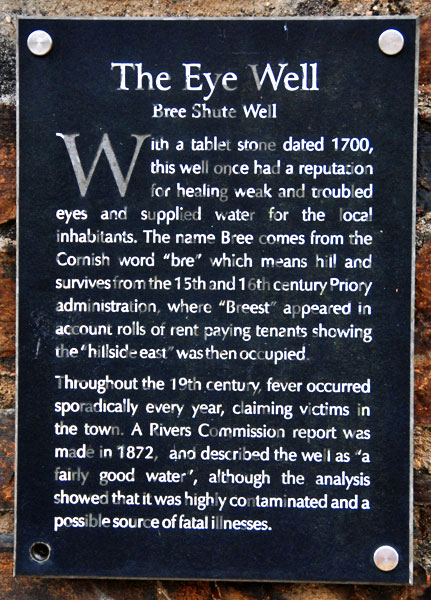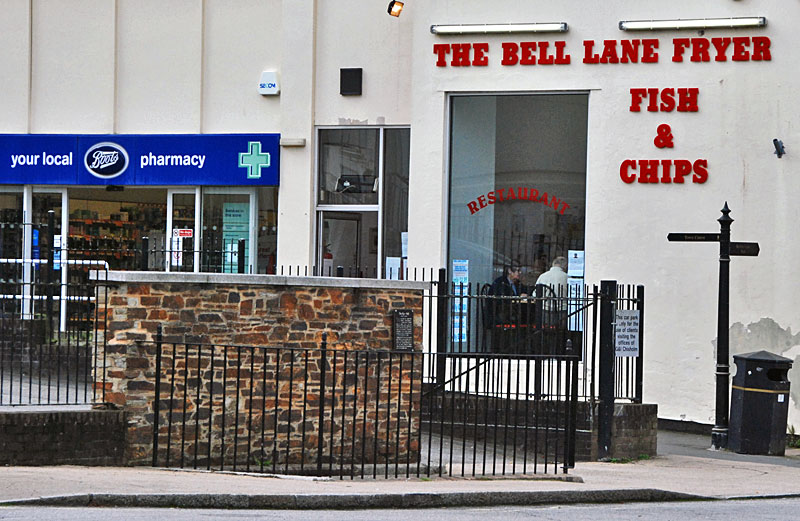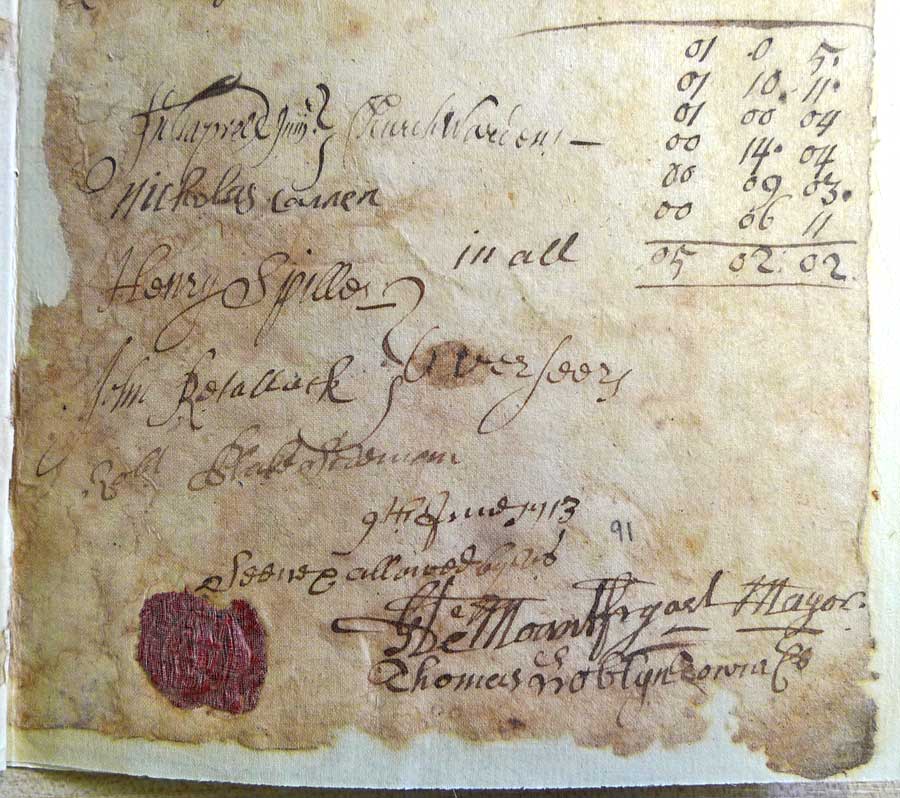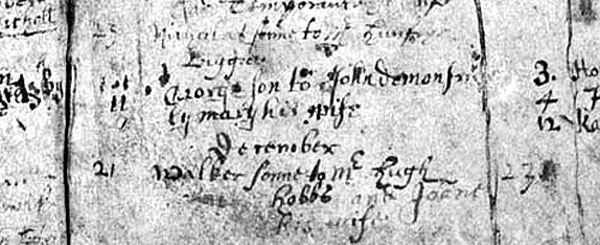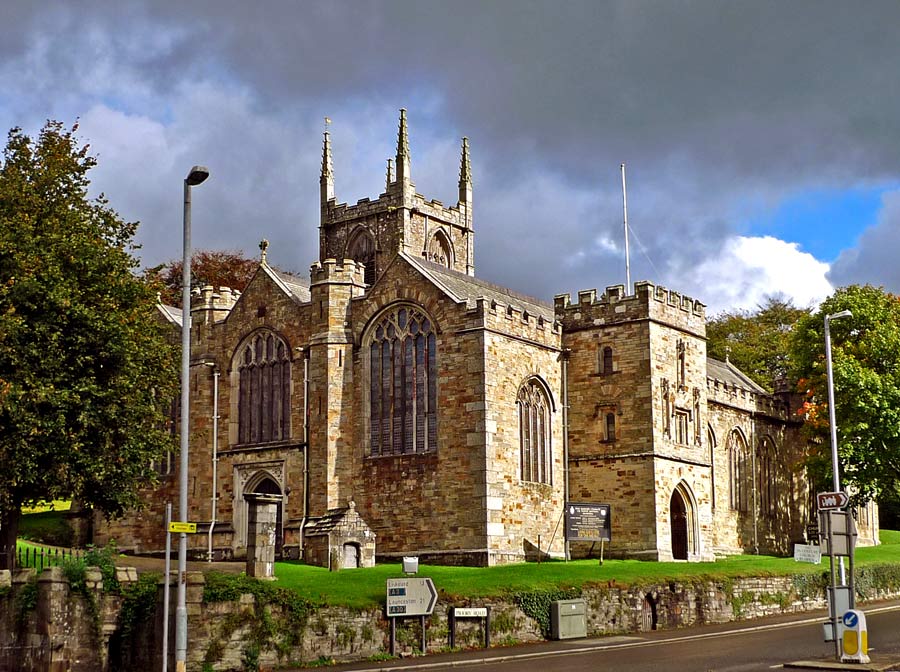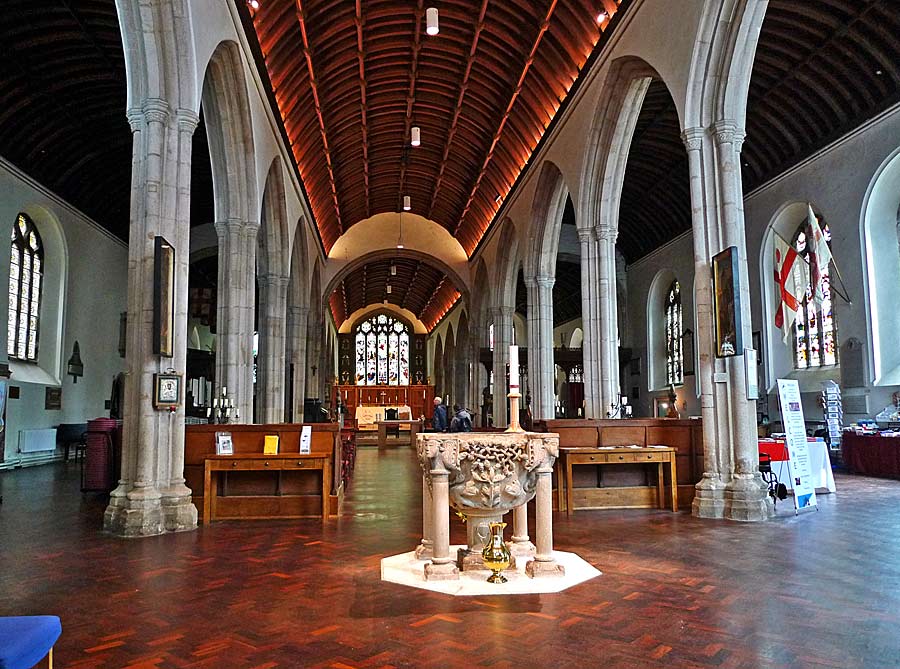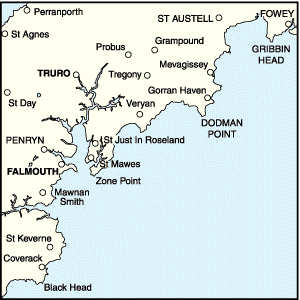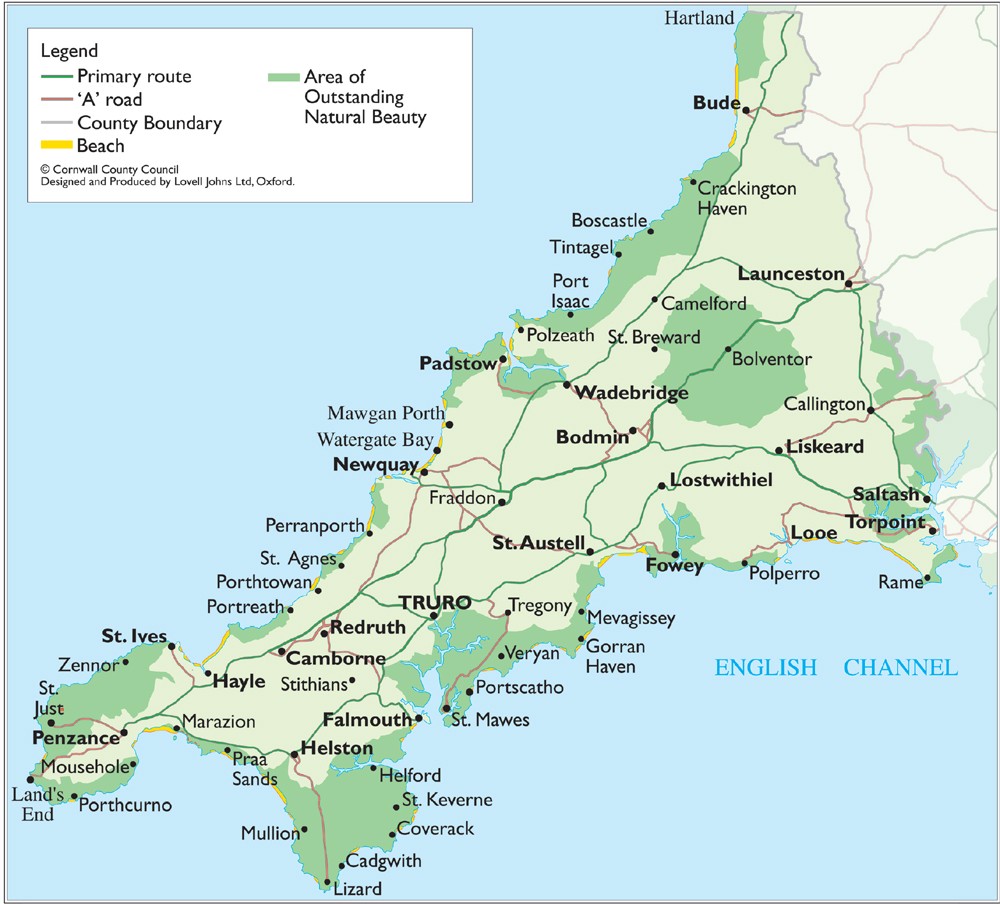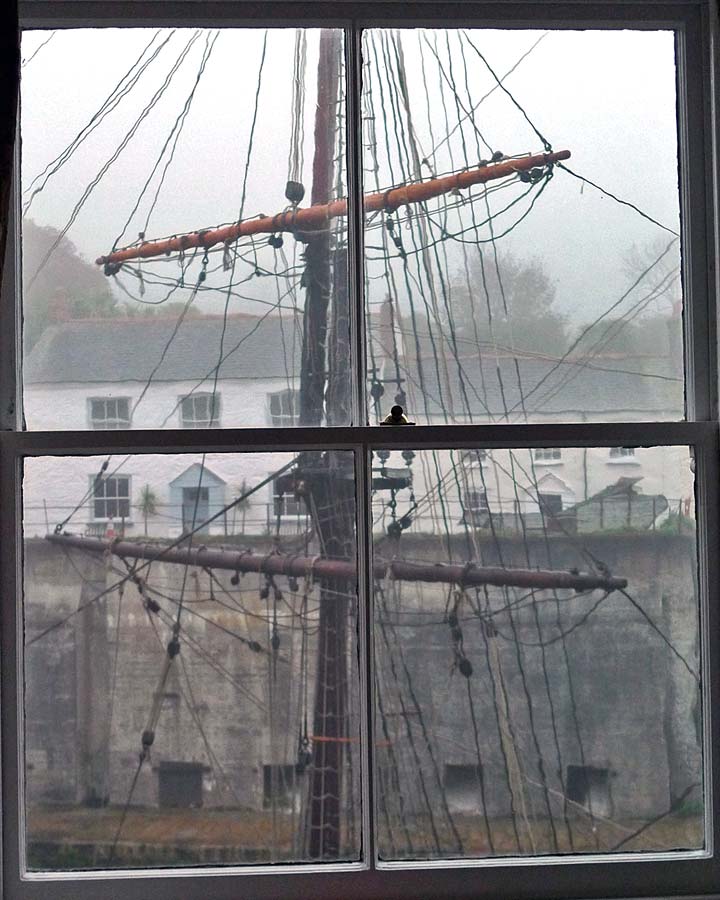Most Recent Ancestors of Adrian Fletcher and Angela Williams
Ancestors of John Adolphus Burton and Georgiana Ernstin (Gem) Burton (Middlecoat)
Nicholas Middlecoat, Dr George Demountfryart, and the Tregony & Bodmin (Cornwall) Connections
Franklin Grigg's "Tregony History" site Genuki page for Cuby with Tregony More about Parish Registers
Whilst most of these people lived in Tregony, their church dedicated to St James was and is called "Cuby with Tregony" as it is technically in the adjacent parish of (Saint) Cuby. Tregony had had its own church by the river (Fal), but it was abandoned in the mid-1500s in the wake of attacks by the river.
SCROLL DOWN
|
||||
|
Back through the generations ----
|
Adrian Fletcher |
Col Michael Fletcher & Peggy Sproule |
Ethel Burton & Dr F Rex (Jimmy) Fletcher |
|
|
MOSTLY IN INDIA
|
"Gem" Middlecoat & Surgeon Lt Col John A Burton |
Lt Col Francis Middlecoat & Mary Locke |
Capt George Middlecoat & Susanna Palmer Hampton |
|
|
IN TREGONY
|
Nicholas Middlecoat Jnr & Ruth Hambly Adrian's 4xGrt Grandparents |
Nicholas Middlecoat Snr (a taylor) & Jane Saunders |
Aaron Saunders (a joiner) & Elizabeth Demountfryart |
|
|
IN BODMIN |
Dr George (1652-1717 (65)) Demountfryart & Anna Howard. George was Mayor of Bodmin (Cornwall) - 1691, 1694, 1700, 1712, & 1716. |
John Demountfryart & Mary (unknown) |
Dr Vincent Demonfryat & Jone (unknown) (m1) Adrian's 9xGrt Grandparents - in Bodmin early 1600s.
|
|
Tregony
Tregony is a hill town sitting above the River Fal - nowadays a modest creek, but in medieval times a navigable waterway with docks.
|
||||
Tregony High - 2011. In the early 1800s Nick Middlecoat Jnr's Queen's Head Inn stood where the white building on the far right now is. The reason why the road is unusually wide is that in the middle there was a market hall, and above this was a meeting room (for the "council") - Nick went one stage further and put a substantial arch over the road between his inn on the right and the meeting room in the centre. Substantial, because on top of the arch linking the inn and the meeting room was a drinking lounge run by Nick (a sort of Cornwall Vasari Corridor with bar). You can get the idea from the detail from a 1787 map shown below (thanks to the Cornish Archives for this).
The tower on the left was built much later when the middle-road markets were removed, but the large stone house (the Rectory) and the coaching inn next door (The King's Arms - an excellent lunch spot and now sole survivor of Tregony's 30 - 40 inns and pubs) on the left would have been familiar sights to Nick. Many many thanks to Frank Grigg, local historian, for helping interpret all of this.
|
||||
|
The centre of worship for our Tregony rels was the church of "Cuby with Tregony". Since their time the body of the church has been significantly remodelled, but today's tower would be much as they knew it. Sadly the old gravestones have been cleared from the graveyard, and none of "our lot" survived. Sadly also the church is kept locked. The rather odd church naming came about after Tregony's own church, St James, got washed away by the river, and rather than build a new one they persuaded the next door parish of St Cuby to share their church, which happened conveniently to be on the border of the two parishes (at the end of Tregony High St!).
|
||||
Grampound
Nick Middlecoat had a long history of electoral controversy through the 1790s and into the 1800s. In particular there were accusations of him taking "success fees" from candidates and then allowing his support to switch to a higher bidder. Eventually things caught up with him, and on Wednesday July 14, 1819, Isaac Watts, Samuel Groggan, John Luke, John Cooke and Nicholas Middlecote (sic) were tried before the Lord Chief Justice in the Court of the King's Bench, for a range of offences relating to the attempted bribery of electors in Tregony and Grampound before an election in the previous year. They were found guilty in respect of the Grampound related offences, but we have yet to discover what the punishment was. Trial Report in the London Times 15 July 1819. Electoral bribery in the so-called rotten boroughs of Cornwall was rampant at the time, yet this was the only case ever to be successfully brought to court before the Great Reform Act did a major clean-up in 1832. Nick and his mates must have got something seriously wrong to go down in history in this way!
Eventually, as a consequence of yet more bribery events, Grampound was formally disenfranchised in 1824 - the only rotten borough to receive this treatment prior to the Great Reform Act of 1832. And Nicholas Middlecoat Jnr (72) faded from the public scene. But he was far from finished life-wise. In 1838, aged 86, he is a witness at the marriage of his daughter Charlotte to Charles Oatey, in 1841 he is censussed in Rospeath near Land's End, and he finally dies in 1844, aged 92, and is buried in the Cuby with Tregony church. Sadly his tombstone has not survived.
|
||||
Interesting Documents
|
||||
|
Nicholas Middlecoat jnr (1752 - 1844 (92))
Unconnectedly, Richart Barwell was a contemporary of Col Samuel Hampton in Calcutta ! |
from the "Dictionary of Indian Biography" by C.E.Buckland, London 1906
|
In 1801 Tregony had a population of 937, of whom just 200 were allowed to vote for 2 MPs to go to Westminster. Tregony was a classic "rotten borough" (and also a "potwalloper borough"). Nearby Grampound had a smaller number of voters and also sent two MPs to parliament.
Potwalloping in A(u)ction
from the front page of The Times, 12 November 1801
A potwalloper borough was one in which a householder had the right to vote if he had, in his house, a hearth large enough to boil, or wallop, a cauldron, or pot (Wikipedia). So it seems that successful house buyers here could look forward to ongoing income from electoral bribes.
|
||
|
Nicholas Middlecoat Jnr (1752 - 1844 (92)), political fixer, trader and Licensee of the Queens Head Inn, Tregony. Handled (and seemingly often appropriated) election bribery money for three decades from the early 1790s. His life was very long and a bit of a roller coaster, as this selection of documents from the Cornwall Records Office indicates. Sadly the Queens Head was demolished in the early 1800s - it was located nearly opposite today's clock tower. Nicholas Jnr and his wife Ruth (Hambly) had at least 14 children between 1780 and 1804, most of whom thrived on Cornish food and made it through to adulthood. Child 13 was George, Madras Artillery Captain and Adrian's 3xGrt Grandfather.
ch 25 August 1752 Cuby with Tregony, nr Truro, Cornwall.
HH/16/24-32 1788-89 Regarding the export of British manufactured goods on the packets: held by Customs ("The Revenue Men") - Mainly involving N Middlecoat (probably jnr) & N Hambly, (more likely Wm Hambly, Nick's brother-in-law).
CF/1/4748 1796 I. P. Coffin's pamphlet "to the worthy electors of the borough of Tregony", publishing letters and papers proving treachery of Middlecoat, Gurney and Hawkins, and good faith of Barwell
CF/1/4751 1796
Rich. Barwell's address to Tregony
electors concerning Chris. Hawkins, Nich. Middlecoat and rev. Rich.
Gurney plotting to ruin his chances as M.P., while professing to
support him.
CF/1/4750 1796 Nich. Middlecoat's address to borough of Tregony disclaiming Barwell's assertions of treachery and accusing him of duplicity
Note: Richard Barwell (1741-1804) was a "Bengal man" and strong supporter of Warren Hastings. He was renowned for his great (dubiously won) wealth, and had two houses in Calcutta when he retired from India in October 1781. At that time Col Samuel Hampton seems to have had about 9 houses there!
HH/13/108 6th December 1796 Affidavit sworn by John BARNICOAT of Tregony cordwainer that some three years previously he was in company with Revs. Rd. and Thomas Peter GURNEY and Nicholas MIDDLECOAT when last said he did not know anything about Sir. C. H. opposing Mr. BARWELL in Tregony and was not authorised to make use of Sir. C. H's name in any such manner.
|
1 April 1798 Demolition of an "illegal" first floor bar-room built by Nicholas Middlecoat on an over-the-main-road arch linking the Queens Head and the Council Chamber above the market hall - Nick's "Vasari Corridor"! - No supporting refs found yet.
HH/13/209 14th March 1808 Letter. T. CROGGON to Sir C. H.: Cochranes arrived: Mr. Middlecoat and Mr. Roberts have been here ever since the 7th. I have repeatedly urged them to procure the needful and use it discreetly but they have neglected to do it...... I consider the day is lost for want of decision and energy".
CF/1/4644 c.1808 Agreement to terminate differences between Chris. Hawkins, represented by Nich. Middlecoat of Tregony, and Geo. Augustus Cochrane, represented by Walter Pomeroy, St. Austell
J/1/2098 17 April 1789 - 15 May 1810 Correspondence about Tregony Elections. Letters from Nicholas Middlecoat to Sir C. Hawkins, Bt.
More about Sir Christopher Hawkins
1808-1814 Two Bankruptcies for Nick Jnr
HH/13/262 19th October 1818 Letter: Joseph VENNICOMBE to Sir C. H. "many things I can inform you respecting the said business" - Grampound bribery - "and also about the sum of money agreed on to pay about 36 voters - particularly Middlecoat's part in the affair."
The House of Commons, 1790-1820, Volume 1, By R. G. ThorneN Middlecoat in Grampound (p57)
Extract from “The Western Antiquary"
Volume 6 (c1887) by W H K Wright (Google)
“At the election of 1818, the
virtuous Middlecoat again repaired to London, in company with four
other persons like unto himself, in search of candidates for Tregony
and Grampound. They put up at an inn (The Bell & Crown, 24 hours
from Exeter on the Royal Auxiliary Mail) in Holborn and arranged the
sale of the boroughs, the price to be paid for the latter being
7,000 and for the former 6,000 guineas.” (p32)
|
"Coaching Days and Coaching Ways" by W Outram Tristram"
In July 1819 Isaac Watts, Samuel Groggan, John Luke, John Cooke, and Nicholas Middlecote (sic) (represented by the Rev Richard Gurney from Tregony) were tried by a "special jury" in the Court of King's Bench presided over by none less than the Chief Justice, and found guilty of attempting to bribe the electors of Grampound. Don't know what the punishment was yet.
Trial Report in the London Times 15 July 1819
HH/13/275 11th October 1819 Letter: John TEED to Sir C. H.: "I hope in November Middlecoat and the others will receive such a lesson as will teach them and those who remain that ingratitude and duplicity will not protect them from punishment when they so grossly deserve it"
Eventually, as a consequence of other bribery events, Grampound was formally disenfranchised in 1824 - the only rotten borough to receive this treatment prior to the Great Reform Act of 1832. And Nicholas Middlecoat Jnr (72) fades from the public scene. But he is far from finished life-wise. In 1838 he is a witness at the marriage of his daughter Charlotte to Charles Oatey, in 1841 he is censussed in Rospeath near Land's End and he finally dies in 1844, aged 92.
d 30 July b 4 August 1844 (92) - death certificate
Sadly the Queens Head was demolished in the early 1800s, and no family gravestones remain in the cleared Cuby with Tregony churchyard.
Adrian Fletcher afletch at paradoxplace dot com
HH - held at the Courtney Library, Royal Institution of Cornwall, Truro. Other papers including parish records and wills are held in the Truro Cornwall Records Office.
|
|
|
|
Saint Cuby (aka Cybi)
was a Celtic Cornish Saint who travelled widely in Cornwall, Wales and on the Irish sea.
Several churches are dedicated to him, as is a spring enclosure in North Wales where miraculous cures were administered.
|
||||
|
|
||||
|
1752 - New Year's Day moves to January 1st
New Year's Day for 1752 in England was reset to January 1st - up until this time it had been on March 25th. So there was no January 1 - March 24 1751 (aka 1751/52) ! The first three months of years before this are sometimes shown with two year numbers - eg Jan 1550/51 - for clarity. Amongst other things, zodiac versed readers will see that the concept of a two or three headed "Janus" looking back on the old year and forward to the new in the month of January was looking at life through an agricultural rather than calendar lens.
Also, in order to effect the change to the Gregorian Calendar, the English days September 2 - 14 1752 were disappeared - Nick Middlecoat jnr (b August 1752) damn nearly arrived on earth in a calendrical black hole !
|
||||
| Adrian's: 4xGrt grandparents | 5xGrt grandparents | 6xGrt grandparents | 7xGrt grandparents + | |
|
Nicholas Middlecoat Jnr
b ch 25 August 1752 Cuby with Tregony, nr Truro, Cornwall.
Married in Cuby with Tregony 6 July 1779 by banns
Father of 14, innkeeper ("Queens Head Inn " Tregony), political agent and fixer (see above), writer and writee, bankrupt (c1808) ... a fascinating Cornish rogue.
Found Guilty of Electoral Bribery - Report in the London Times 15 July 1819
Signatory, as a Tregony freeholder (of what?) (along with 2 cousins and a few hundred Cornishmen), of the 1820 Loyal Declaration.
1841 census - Found right down near the tip of Cornwall in Rospeath as a "supervisor of tin" (presumably not at the Rospeath mine which only produced copper).
d 30 July b 4 August 1844 (yes 1844) aged
92
parish burial record No 675.
|
Nicholas Middlecoat Snr
b ch 15 March 1718, Cuby with Tregony (parents identified as Edward & Elizabeth)
m 29 June 1749 in Cuby with Tregony (bishops transcript only)
A Tailor (Taylor)
d bu Cuby with Tregony 17 Sept 1801 (83). Half way down p56 - the very feint entry (that's the way it goes!).
Will of Nicholas Middlecoat Snr (with transcript & abstract)
AP/M/3145 Will of Nicholas Middlecoat, tailor, of Tregony 1802 (proved)
|
Edward Midlecoat (sic)
|
|
|
|
|
||||
|
Elizabeth Midlecoat ( )
|
|
|||
|
|
||||
|
Jane Middlecoat (Saunders)
b ch 31 January 1721 in Cuby with Tregony (parents identified as Aaron & Elizabeth) (may be mistranscribed date as parents married in Bodmin 2 months later!)
m 29 June 1749 in Cuby with Tregony (bishops transcript only)
d bu 21 July 1804 (82) Cuby with Tregony we think that this is her as she probably died after Nick Snr.
|
Aaron Sanders
c Cuby with Tregony 27 December 1696
A carpenter / joiner (we think) from Tregony
m 11 April 1721 in St Petroc, Bodmin - Elizabeth Demountfryart, the physician mayor's daughter.
bu: not located yet - probably Cuby with Tregony
|
Aaron Sanders Snr
b ?
m 6 June 1693, Cornelly, Cornwall
d bu Cuby with Tregony 24 November 1729. Bishop's Transcript, from Franklin Grigg.
Aaron Sanders died intestate and the papers "AP/S/2691 Will of Aavon (sic) Sanders, joynor of Tregony 1730-1731" relate to the administration of his estate which wife Jane delegated to Colan Quintrell, carpenter husband of daughter Mary.
|
||
|
|
||||
|
Jane Sanders (Fountain)
b ?
m 6 June 1693, Cornelly, Cornwall
bu Cuby with Tregony, 11 July 1734 (Bishop's Transcript, from Franklin Grigg).
|
||||
|
The Coat of Arms above comes from a page about the Demonfryart family in Bodmin, found in "The Parochial and family history of the parish and borough of Bodmin, in the county of Cornwall" by Sir John Maclean (1870). The book records that this seal appears on many documents in the Bodmin municipal records, though our brief research did not reveal any! After examining the parish register marriage record for Dr George, we have decided that the name "Mowat" given in the book as the maiden name of his wife, should have been Howard.
Elizabeth Sanders (Demountfryart)
b 21 February 1692/3, Bodmin, Cornwall
m April 11 1721 (in Bodmin) by Banns.
"Aaron Sanders of Tregony" according to Phillimore's Directory, though the original parish register does not say where Aaron hailed from!
d bu Cuby with Tregony 8 October 1730 (37) Bishop's Transcript, from Franklin Grigg.
|
Dr George Demountfryart (or Demonfriart & other variations)
b: ch 11 November 1652, St Petroc, Bodmin
Look towards bottom of third column
m: 24 Feb 1675/6 to Anna Howard in St Menefreda church, St Minver, Cornwall
BRA93/29 10 Sep 1690 Contents: Lease (99 years) house etc in Bodmin
Five terms as Mayor of Bodmin (Cornwall) - 1691, 1694, 1700, 1712, 1716 (during which he died). We have photos of some of the documents from his mayoral days.
George's name and 1700 mayoral term is still remembered on an inscribed stone next to a piped water outlet (from "The Beacon") in Bell Lane, Bodmin (photo below). The water was said to be very healthy and especially good for curing eye infections. Not today!
bu: 28 December 1717 (65) in St Petroc, Bodmin
As yet we have been unable to locate George's will.
The images of the original St Petroc, Bodmin Parish Church records on Family Search are mostly high quality and legible - if you have a few hours to spare to go trawling. Thanks yet again to Family Search for this (free) service to family historians !
The churchyard of St Petroc has been largely cleared of headstones. Several of them are leant against the perimeter wall - mostly now overgrown and not readable.
|
|||
|
Anna (Ann) Demountfryart (Howard)
m: 24 Feb 1675/6 in St Menefreda (St Minver), Cornwall
Anna's maiden name is difficult to read, but is probably Howard - the family name of the Dukes of Norfolk.
The registers of the Bodmin Parish Church of St Petroc record the baptisms of George and Anna's 16 children, half of whom died in infancy. In some of the entries it is noted that George is Mayor, but none of them state the name of his wife!
bu: 3 November 1722 in St Petroc, Bodmin.
|
||||
| Adrian's: 4xGrt grandparents | 5xGrt grandparents | 6xGrt grandparents | 7xGrt grandparents + | |
|
Bodmin
In Bodmin, an inscription on the Bree Shute Well records Adrian's 7xGrt Grandfather Dr George Demountfryart as Mayor (of Bodmin) in 1700. The well outlet has now sunk between a car park and a fish and chip shop, but it's amazing that the pipeline structure has been looked after for 312 years and not just filled in and forgotten.
Physician George Demountfryart, Adrian's 7xGrt Grandfather (Nick Middlecoat jnr's Grt Grandfather) had five terms as Mayor of Bodmin (Cornwall) - 1691, 1694, 1700, 1712, & 1716. His 1700 term is still remembered on the inscription on this water outlet in Bell Lane, Bodmin. The water was (is?) piped from "The Beacon", a hill some distance south of Bodmin, so this would have been a significant engineering undertaking and expense, particularly in conjunction with the need to repair the church after the damage caused in December 1699 when the spire was toppled by lightening. It was reported later that "the conduit in Breeshute, (was) repaired in 1824". The water was said to be very healthy and especially good for curing eye infections. Not today we think, but the fact that the piping is still working over 300 years after it was built is remarkable!
|
||||
|
Some remarkable restoration work has been carried out by the Cornwall Records Office (Truro) on many documents which were rotting in the Church porch rooms until far too recently! This is George's flourishing signature on the 1713 Bodmin Poor Rates Accounts, and we also have the 1706 Bodmin Window Tax Schedules and Dr George's 1700-01 Mayor's Accounts.
|
||||
|
Earlier in St Petroc, young George Demonfriart, son of John and Mary, is christened on 11 November 1652
|
||||
|
Church of St Petroc, Bodmin - up to 1699 there was also a 150 foot spire which was toppled by a lightening strike on December 9 1699.
The huge 1470s and subsequently much restored church interior is a beautiful and cleverly lit space. The font, which is three hundred years older than the church, has been repositioned in the centre of the west nave. Many old fonts in England are to be found in a gloomy south-west location, sometimes with chairs etc stacked in the same area. The combined impact of a beautiful old font, central positioning and brilliant lighting of both font and roof beams is a model of excellence. The church is open daily in the six warmer months of the year.
|
||||
|
|
(1802-1845 (42))
Son of Nicholas and Ruth
Child number 13 of 14 of Nicholas jnr and Ruth, who escaped Cornwall to serve in British India in the Madras Artillery.
|
More about Cap'n George and his descendants in Madras (British India) in the 1800s
|
In 1826 George Middlecoat married Susannah Palmer Hampton, grand-daughter of Colonel Samuel Hampton (Bengal Army). Her great-grandfather was Charles Hampton, who sailed to Calcutta as an East India Company writer (clerk) in 1710.
More about the Hampton family in Bengal (British India) in the 1700s
|
|
|
Back through the generations ----
|
Adrian Fletcher |
Col Michael Fletcher & Peggy Sproule |
Ethel Burton & Dr F Rex (Jimmy) Fletcher |
|
|
MOSTLY IN INDIA
|
"Gem" Middlecoat & Surgeon Lt Col John A Burton |
Lt Col Francis Middlecoat & Mary Locke |
Capt George Middlecoat & Susanna Palmer Hampton |
|
|
IN TREGONY
|
Nicholas Middlecoat Jnr & Ruth Hambly Adrian's 4xGrt Grandparents |
Nicholas Middlecoat Snr (a taylor) & Jane Saunders |
Aaron Saunders (a joiner) & Elizabeth Demountfryart |
|
|
IN BODMIN |
Dr George (1652-1717 (65)) Demountfryart & Anna Howard. George was Mayor of Bodmin (Cornwall) - 1691, 1694, 1700, 1712, & 1716. |
John Demountfryart & Mary (unknown) |
Dr Vincent Demonfryat & Jone (unknown) (m1) Adrian's 9xGrt Grandparents - in Bodmin early 1600s.
START HERE
|
|
| Adrian's: 4xGrt grandparents | 5xGrt grandparents | 6xGrtg x 6 grandparents | 7xGrt grandparents | |
|
Ruth Middlecoat (Hambly)
m Nicholas Middlecoat jnr 6 July 1779 in Cuby with Tregony, Cornwall via banns. Witnesses John Sibly and Wm Jacob.
d (buried) 8 Mar 1825 Cuby with Tregony aged 65
|
Richard Hambly (Hamley)
b ch 22 January 1726 St Clements (nr Truro), Cornwall
m in Tregony 28 February 1756 by licence Described as a Victualler (which could mean Inn Keeper as well as a supplier of Spirits or more general victuals).
d bu 27 August 1763 (aged just 37) in Cuby with Tregony
|
John Hambly Probably from St Clements
|
|
|
|
|
||||
|
Elizabeth Hambly (Higgs) of Launceston if she was the one who married a John Hambly there on 18 May 1714 - the only one of the numerous Cornish John Hamblys that we have found so far to have married an Elizabeth.
|
|
|||
|
|
||||
|
Ann(e) Scott (Hennah / Hambly)
m1 in Tregony 28 February 1756 (aged 16) by licence Wm Hennah was a witness
m2 1 May 1764 (aged 24) in Tregony to John Scott, by banns
d not yet located
|
William Henna
b record not located yet
m married 10 May 1723 - Cuby with Tregony
d record not located yet
AP/H/6266 Will of William Henna of Tregony 1763
|
|
||
|
|
||||
|
Ruth Henna (Teague)
b 22 November 1699 Cuby with Tregony
m married 10 May 1723 - Cuby with Tregony
d bu Cuby with Tregony 13 September 1760 (61)
|
Richard Teague We have also found the original parish register entry for the marriage of the Ruth's parents Richard and Grace, who were married in Cuby with Tregony on 22 October 1683.
|
|||
|
|
|
|||
|
Grace Teague (Laurence)
|
||||
| Adrian's: 4 x grt grandparents | 5 x grt grandparents | 6 x grt grandparents | 7 x grt grandparents | |
|
|
|
|||
|
Charlestown (near St Austell) - purpose built china clay export port
|
||||
